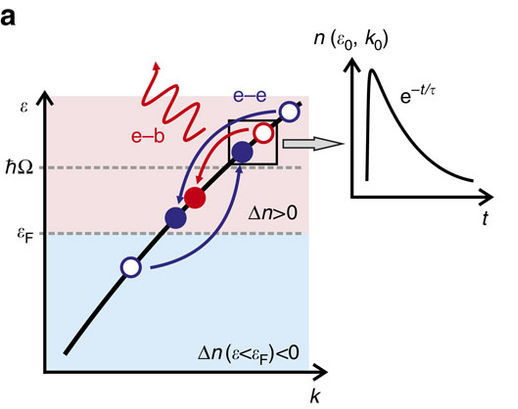Abstract
In complex materials various interactions have important roles in determining electronic properties. Angle-resolved photoelectron spectroscopy (ARPES) is used to study these processes by resolving the complex single-particle self-energy and quantifying how quantum interactions modify bare electronic states. However, ambiguities in the measurement of the real part of the self-energy and an intrinsic inability to disentangle various contributions to the imaginary part of the self-energy can leave the implications of such measurements open to debate. Here we employ a combined theoretical and experimental treatment of femtosecond time-resolved ARPES (tr-ARPES) show how population dynamics measured using tr-ARPES can be used to separate electron-boson interactions from electron-electron interactions. We demonstrate a quantitative analysis of a well-defined electron-boson interaction in the unoccupied spectrum of the cuprate Bi2Sr2CaCu2O8+x characterized by an excited population decay time that maps directly to a discrete component of the equilibrium self-energy not readily isolated by static ARPES experiments.
